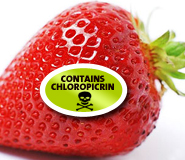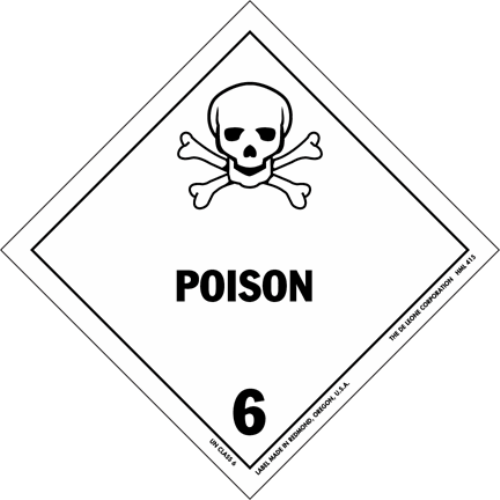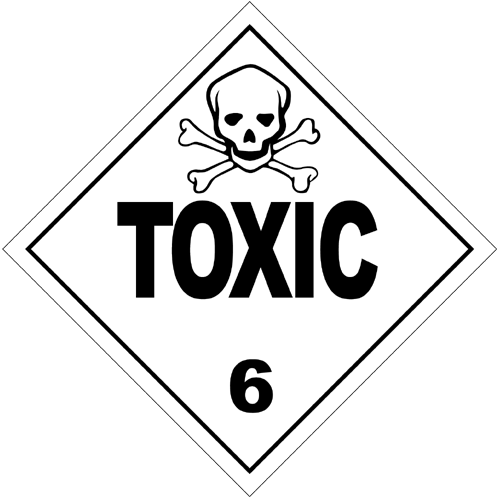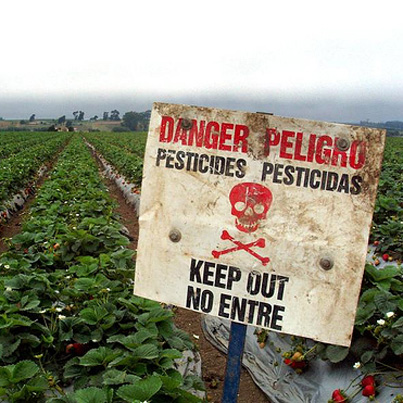From the Open-Publishing Calendar
From the Open-Publishing Newswire
Indybay Feature
California
Santa Cruz Indymedia
Education & Student Activism
Environment & Forest Defense
Health, Housing & Public Services
DPR Recommendations Leave Schoolchildren, Rural Communities At Risk from Pesticides
Sacramento, CA – Today the California Department of Pesticide Regulation (DPR) announced new “recommended restrictions” on the use of chloropicrin, a cancer-causing pesticide used widely on California strawberries. Health, environmental and rural advocates say that DPR ignored its own scientists in developing today’s proposal, and that the recommended restrictions fall far short of protecting schoolchildren and rural residents from harmful exposures to the toxic pesticide.
Since 1999, more than 1,400 people — including farmworkers and other rural residents — have reported symptoms from chloropicrin exposure as it drifts from neighboring fields, sometimes several days after an application. The actual toll is likely much higher because many more poisonings go unreported. Exposure can lead to eye irritation and severe respiratory damage, in addition to an increased risk of cancer. A report released by the California Department of Public Health last year found that chloropicrin is the agricultural pesticide of public health concern that is most heavily used in close proximity to schools. In 2012 alone, over 9 million pounds of chloropicrin were applied across California, often on strawberry fields.
“Chloropicrin should be phased out by 2020, along with other hazardous fumigant pesticides,” said Sarah Aird, co-director of the statewide coalition Californians for Pesticide Reform. “DPR senior officials continue to ignore on-the-ground realities as well as the findings of their own scientists, allowing widespread use of a highly toxic, volatile and drift-prone chemical much too close to California schools, homes and worksites.”
Although these recommended restrictions may result in some small improvements in protection where implemented, County Agricultural Commissioners have authority to require, or ignore, the voluntary recommended chloropicrin use restrictions adopted by DPR today. Of even greater concern, the recommendations are so weak that schoolchildren and residents in counties that enforce the use restrictions will still be at risk. For example, the DPR proposal calls for buffer zones around treated fields that would reduce chloropicrin concentrations to 73 parts per billion in areas adjacent to treated fields. But DPR’s own scientists and along with a panel of independent scientists called for reductions to 2.7 ppb, a 25 times more health protective threshold.
Regulators commonly establish different maximum exposure levels depending on if people are exposed over the shorter or longer term. DPR completely ignored longer-term exposure by failing to recommend seasonal (“sub-chronic”) protection levels in these recommendations, even though DPR’s own air monitoring in one location found chloropicrin at a level 1.4 times higher than its own sub-chronic or seasonal safety level.
“Failing to mitigate longer-term exposures conflicts with DPR’s duty to protect the public from harmful pesticide exposure,” stated Anne Katten, Pesticide and Work Safety Specialist with California Rural Legal Assistance Foundation. Katten also noted that DPR’s recommended small buffer zones for using modern so-called Totally Impermeable Film (TIF) tarps to control fumigant drift are likely to be inadequate for real-world conditions, since tarps can get torn or blown out of place, can leak around the edges, and may fail under wet conditions.
Manuel Silveira, a community resident and leader of Healthy Tehama Farms has dealt with chloropicrin exposure first hand in his neighborhood of Red Bluff, California where homes and a school are located near strawberry fields. He found his eyes watering as he went to his mailbox on several occasions, and chloropicrin drift from one fumigation killed off a large number of his family’s chickens. By using PAN’s Drift Catcher monitoring device he documented air levels of chloropicrin that pose an increased risk of cancer over his children’s lifetime, according to DPR scientists’ cancer risk estimates. “It’s clear that chloropicrin can’t be applied safely. State officials are putting rural communities in the crosshairs as they continue to allow more and more use of the chemical. Chloropicrin winding up in the air around our neighborhood garden, sand box and front yard wasn’t the result of a freak occurrence, but something that happens routinely,” Silveira said.
Chloropicrin is of concern to communities across the state. “More pounds of chloropicrin are applied near Pajaro Valley schools than any other highly hazardous pesticide. The effects of chloropicrin on children’s health is a top concern of parents and teachers in the Monterey Bay area,” said Francisco Rodriguez, Pajaro Valley Federation of Teachers President and special education teacher.
In December 2010, DPR re-characterized the cancer evidence on chloropicrin as “equivocal,” even after a February 2010 report of its own and independent scientists that concluded that chloropicrin can cause cancer. DPR has now asked chloropicrin manufacturers to conduct a new cancer study, but the industry-sponsored research is expected to take several years. “Given the strong scientific evidence of the cancer risk from this toxic pesticide, the state must take stronger action to protect the public now,” said Caroline Cox, Research Director of the Center for Environmental Health. “State officials should also be promoting alternatives to toxic fumigants, for the health of our farms and communities statewide.”
Advocates point to safer methods for controlling soil pests, rather than replacing hazardous fumigants with other hazardous pesticides, and the importance of helping farmers transition to these alternatives which also improve soil health. Such alternatives include crop rotation, anaerobic soil disinfestation, bio-fumigants like broccoli and mustard plants, steam treatment, soil solarization, disease resistant plant varieties and combinations of these lower impact pest management strategies.
Press Release: January 14, 2015
Californians for Pesticide Reform and the Monterey Bay Central Labor Council
http://www.pesticidereform.org/
http://www.montereybaylabor.org/
“Chloropicrin should be phased out by 2020, along with other hazardous fumigant pesticides,” said Sarah Aird, co-director of the statewide coalition Californians for Pesticide Reform. “DPR senior officials continue to ignore on-the-ground realities as well as the findings of their own scientists, allowing widespread use of a highly toxic, volatile and drift-prone chemical much too close to California schools, homes and worksites.”
Although these recommended restrictions may result in some small improvements in protection where implemented, County Agricultural Commissioners have authority to require, or ignore, the voluntary recommended chloropicrin use restrictions adopted by DPR today. Of even greater concern, the recommendations are so weak that schoolchildren and residents in counties that enforce the use restrictions will still be at risk. For example, the DPR proposal calls for buffer zones around treated fields that would reduce chloropicrin concentrations to 73 parts per billion in areas adjacent to treated fields. But DPR’s own scientists and along with a panel of independent scientists called for reductions to 2.7 ppb, a 25 times more health protective threshold.
Regulators commonly establish different maximum exposure levels depending on if people are exposed over the shorter or longer term. DPR completely ignored longer-term exposure by failing to recommend seasonal (“sub-chronic”) protection levels in these recommendations, even though DPR’s own air monitoring in one location found chloropicrin at a level 1.4 times higher than its own sub-chronic or seasonal safety level.
“Failing to mitigate longer-term exposures conflicts with DPR’s duty to protect the public from harmful pesticide exposure,” stated Anne Katten, Pesticide and Work Safety Specialist with California Rural Legal Assistance Foundation. Katten also noted that DPR’s recommended small buffer zones for using modern so-called Totally Impermeable Film (TIF) tarps to control fumigant drift are likely to be inadequate for real-world conditions, since tarps can get torn or blown out of place, can leak around the edges, and may fail under wet conditions.
Manuel Silveira, a community resident and leader of Healthy Tehama Farms has dealt with chloropicrin exposure first hand in his neighborhood of Red Bluff, California where homes and a school are located near strawberry fields. He found his eyes watering as he went to his mailbox on several occasions, and chloropicrin drift from one fumigation killed off a large number of his family’s chickens. By using PAN’s Drift Catcher monitoring device he documented air levels of chloropicrin that pose an increased risk of cancer over his children’s lifetime, according to DPR scientists’ cancer risk estimates. “It’s clear that chloropicrin can’t be applied safely. State officials are putting rural communities in the crosshairs as they continue to allow more and more use of the chemical. Chloropicrin winding up in the air around our neighborhood garden, sand box and front yard wasn’t the result of a freak occurrence, but something that happens routinely,” Silveira said.
Chloropicrin is of concern to communities across the state. “More pounds of chloropicrin are applied near Pajaro Valley schools than any other highly hazardous pesticide. The effects of chloropicrin on children’s health is a top concern of parents and teachers in the Monterey Bay area,” said Francisco Rodriguez, Pajaro Valley Federation of Teachers President and special education teacher.
In December 2010, DPR re-characterized the cancer evidence on chloropicrin as “equivocal,” even after a February 2010 report of its own and independent scientists that concluded that chloropicrin can cause cancer. DPR has now asked chloropicrin manufacturers to conduct a new cancer study, but the industry-sponsored research is expected to take several years. “Given the strong scientific evidence of the cancer risk from this toxic pesticide, the state must take stronger action to protect the public now,” said Caroline Cox, Research Director of the Center for Environmental Health. “State officials should also be promoting alternatives to toxic fumigants, for the health of our farms and communities statewide.”
Advocates point to safer methods for controlling soil pests, rather than replacing hazardous fumigants with other hazardous pesticides, and the importance of helping farmers transition to these alternatives which also improve soil health. Such alternatives include crop rotation, anaerobic soil disinfestation, bio-fumigants like broccoli and mustard plants, steam treatment, soil solarization, disease resistant plant varieties and combinations of these lower impact pest management strategies.
Press Release: January 14, 2015
Californians for Pesticide Reform and the Monterey Bay Central Labor Council
http://www.pesticidereform.org/
http://www.montereybaylabor.org/
Add Your Comments
Comments
(Hide Comments)
UPDATE: chemical spilled at downtown business either tear gas or chloropicrin
Jan 11, 2015. Fargo, ND
Fargo Fire said Hazmat crews have narrowed down the chemical spilled at a downtown business to two possibilities.
It was found that the chemical was likely either tear gas or chloropicrin.
These chemicals are irritating and can cause breathing problems, but are much less hazardous than phosgene.
One person from Digital Hospital was complaining of eye irritation.
That person was treated and released by FM Ambulance.
The chemical was in a vial in the back of an old safe. It was installed as a deterrent to someone trying to break the safe.
It was designed so the chemical would be released if someone broke into the safe.
The building will remain closed until a cleanup company removes the spilled chemical. The Red Cross will help the family with temporary housing.
ORIGINAL STORY:
Hazmat crews responded to a bizarre call in downtown Fargo Saturday night.
Fargo fire received a call about someone exposed to chemicals at the Digital Hospital.
They arrived to find an older style vault inside where two people had dropped two vials stored inside it.
Fargo Fire said it's a tear gas like chemical the hazmat crew is still working to identify.
The theft deterrent was used as far back as 100 years ago in vaults and safes to protect the contents from being stolen.
One person from Digital Hospital was treated and released.
A neighboring business and a family of three living upstairs was evacuated for safety.
Jan 11, 2015. Fargo, ND
Fargo Fire said Hazmat crews have narrowed down the chemical spilled at a downtown business to two possibilities.
It was found that the chemical was likely either tear gas or chloropicrin.
These chemicals are irritating and can cause breathing problems, but are much less hazardous than phosgene.
One person from Digital Hospital was complaining of eye irritation.
That person was treated and released by FM Ambulance.
The chemical was in a vial in the back of an old safe. It was installed as a deterrent to someone trying to break the safe.
It was designed so the chemical would be released if someone broke into the safe.
The building will remain closed until a cleanup company removes the spilled chemical. The Red Cross will help the family with temporary housing.
ORIGINAL STORY:
Hazmat crews responded to a bizarre call in downtown Fargo Saturday night.
Fargo fire received a call about someone exposed to chemicals at the Digital Hospital.
They arrived to find an older style vault inside where two people had dropped two vials stored inside it.
Fargo Fire said it's a tear gas like chemical the hazmat crew is still working to identify.
The theft deterrent was used as far back as 100 years ago in vaults and safes to protect the contents from being stolen.
One person from Digital Hospital was treated and released.
A neighboring business and a family of three living upstairs was evacuated for safety.
For more information:
http://www.valleynewslive.com/home/headlin...

Agent Characteristics
APPEARANCE: Colorless to faintly yellow oily liquid.
DESCRIPTION: Chloropicrin (PS) is used in agriculture as a soil fumigant. It has also been used as a chemical warfare agent (military designation, PS) and a riot control agent. It was used in large quantities during World War I and was stockpiled during World War II. However, it is no longer authorized for military use. Chloropicrin (PS) is an irritant with characteristics of a tear gas. Chloropicrin (PS) has an intensely irritating odor. Inhalation of 1 ppm causes eye irritation and can warn of exposure.
METHODS OF DISSEMINATION:
Indoor Air: Chloropicrin (PS) can be released into indoor air as a liquid spray (aerosol).
Water: Chloropicrin (PS) can contaminate water.
Food: Chloropicrin (PS) can contaminate food.
Outdoor Air: Chloropicrin (PS) can be released into outdoor air as a liquid spray (aerosol).
Agricultural: If chloropicrin (PS) is released as a liquid spray (aerosol), it has the potential to contaminate agricultural products.
ROUTES OF EXPOSURE: Chloropicrin (PS) can be absorbed systemically through inhalation, ingestion, and the skin. It is severely irritating to the lungs, eyes, and skin.
APPEARANCE: Colorless to faintly yellow oily liquid.
DESCRIPTION: Chloropicrin (PS) is used in agriculture as a soil fumigant. It has also been used as a chemical warfare agent (military designation, PS) and a riot control agent. It was used in large quantities during World War I and was stockpiled during World War II. However, it is no longer authorized for military use. Chloropicrin (PS) is an irritant with characteristics of a tear gas. Chloropicrin (PS) has an intensely irritating odor. Inhalation of 1 ppm causes eye irritation and can warn of exposure.
METHODS OF DISSEMINATION:
Indoor Air: Chloropicrin (PS) can be released into indoor air as a liquid spray (aerosol).
Water: Chloropicrin (PS) can contaminate water.
Food: Chloropicrin (PS) can contaminate food.
Outdoor Air: Chloropicrin (PS) can be released into outdoor air as a liquid spray (aerosol).
Agricultural: If chloropicrin (PS) is released as a liquid spray (aerosol), it has the potential to contaminate agricultural products.
ROUTES OF EXPOSURE: Chloropicrin (PS) can be absorbed systemically through inhalation, ingestion, and the skin. It is severely irritating to the lungs, eyes, and skin.
For more information:
http://www.cdc.gov/niosh/ershdb/EmergencyR...

CHEMICAL DANGERS:
Chloropicrin decomposes explosively when heated above 234°F.
Liquid chloropicrin (PS) is unstable with high temperatures or severe shock, particularly when involving containers of greater than 30 gallons capacity.
Liquid chloropicrin (PS) will attack some forms of plastics, rubber, and coatings.
Decomposition of chloropicrin (PS) may release toxic gases, such as nitrogen oxides, phosgene, nitrosyl chloride, chlorine, and carbon monoxide. See the emergency response cards for phosgene, nitrosyl chloride, chlorine, and carbon monoxide.
Chloropicrin is relatively inert chemically and non-corrosive to copper, brass, and bronze; but it attacks iron, zinc, and other light metals.
Contact with metals may evolve flammable hydrogen gas.
Chloropicrin reacts violently with aniline, sodium methoxide, and propargyl bromide. It also reacts with 2-bromopropyne and strong oxidants.
Chloropicrin decomposes explosively when heated above 234°F.
Liquid chloropicrin (PS) is unstable with high temperatures or severe shock, particularly when involving containers of greater than 30 gallons capacity.
Liquid chloropicrin (PS) will attack some forms of plastics, rubber, and coatings.
Decomposition of chloropicrin (PS) may release toxic gases, such as nitrogen oxides, phosgene, nitrosyl chloride, chlorine, and carbon monoxide. See the emergency response cards for phosgene, nitrosyl chloride, chlorine, and carbon monoxide.
Chloropicrin is relatively inert chemically and non-corrosive to copper, brass, and bronze; but it attacks iron, zinc, and other light metals.
Contact with metals may evolve flammable hydrogen gas.
Chloropicrin reacts violently with aniline, sodium methoxide, and propargyl bromide. It also reacts with 2-bromopropyne and strong oxidants.
For more information:
http://www.cdc.gov/niosh/ershdb/EmergencyR...

EXPLOSION HAZARDS:
Contact with strong oxidants may cause fires or explosions.
Chloropicrin (PS) may explode when it is heated under confinement.
Containers may explode when heated.
Upper and lower explosive (flammable) limits in air are not available for chloropicrin (PS).
Contact with strong oxidants may cause fires or explosions.
Chloropicrin (PS) may explode when it is heated under confinement.
Containers may explode when heated.
Upper and lower explosive (flammable) limits in air are not available for chloropicrin (PS).

PHYSICAL DANGERS:
Vapors are heavier than air. They will spread along the ground and collect and stay in poorly-ventilated, low-lying, or confined areas (e.g., sewers, basements, and tanks).
Hazardous concentrations may develop quickly in enclosed, poorly-ventilated, or low-lying areas. Keep out of these areas. Stay upwind.
Large volumes of this chemical may be shock sensitive.
Vapors are heavier than air. They will spread along the ground and collect and stay in poorly-ventilated, low-lying, or confined areas (e.g., sewers, basements, and tanks).
Hazardous concentrations may develop quickly in enclosed, poorly-ventilated, or low-lying areas. Keep out of these areas. Stay upwind.
Large volumes of this chemical may be shock sensitive.
For more information:
http://www.cdc.gov/niosh/ershdb/EmergencyR...

I recently went on a week long trip to visit the conventional produce farms in the very fertile Salinas Valley region of California. I saw pristine acres of; iceberg lettuce, romaine lettuce, baby spinach, artichokes and strawberries. As the bus pulled into the strawberry fields I noticed a sign “Danger – Peligro | Keep Out – No Entre” and that initiated a conversation that I don’t believe my tour guide wanted to have about the chemicals used to keep those fields looking so pristine.
For more information:
http://ecoveggy.com/danger-fresh-strawberr...
A Brief History of the Modern Strawberry
http://youtu.be/fPxUIz5GHAE
Published on Nov 10, 2014
From cereal to ice cream to cocktails, it seems that strawberries are served with just about everything. But it wasn't always this way. Today, Americans eat four times as many strawberries as they did 40 years ago. This short stop-motion animation explains how clever advertising tactics and certain pesticides helped make the juicy red fruit cheaply and widely available. There are, however, hidden costs to using these chemicals. Based on an investigation by The Center for Investigative Reporting.
For more information on this story, visit cironline.org/strawberries
http://youtu.be/fPxUIz5GHAE
Published on Nov 10, 2014
From cereal to ice cream to cocktails, it seems that strawberries are served with just about everything. But it wasn't always this way. Today, Americans eat four times as many strawberries as they did 40 years ago. This short stop-motion animation explains how clever advertising tactics and certain pesticides helped make the juicy red fruit cheaply and widely available. There are, however, hidden costs to using these chemicals. Based on an investigation by The Center for Investigative Reporting.
For more information on this story, visit cironline.org/strawberries
For more information:
http://youtu.be/fPxUIz5GHAE
We are 100% volunteer and depend on your participation to sustain our efforts!
Get Involved
If you'd like to help with maintaining or developing the website, contact us.
Publish
Publish your stories and upcoming events on Indybay.
Topics
More
Search Indybay's Archives
Advanced Search
►
▼
IMC Network


